A single strum can ripple the air, transforming silence with a note that reaches out, lingers, and ultimately fades away… unless you’ve got a guitar sustain pedal at your disposal. You see, this is not just another accessory – it’s a gateway to infinite musical horizons. It’s a profound event that forever changed my approach to playing the guitar. The way it defies the nature of sound, holding onto a note long past its natural lifespan, feels nothing short of wizardry.
Imagine an electrical pulse coursing through your electric guitar, enveloped and carried forward by a well-tamed echo lingering without a hint of decay. That’s the power of sustain pedal for guitars. But exactly how does this pedal manage to mimic a sound that feels so organic, yet so unnatural? How far can the sustain effect be pushed and to what extent does it redefine the aural perception? Such questions hooked me into diving headfirst into the world of sustain pedals, and what I discovered has been a revelation.
Referencing both my persona experience and thorough research, I’ve put together this guide to help fellow guitar enthusiasts unlock the mystery of guitar sustain pedals. Incorporating everything from basic understanding to advanced techniques, with top-rated models and buying tips, this guide is everything you need to master the magical essence of sustain in electric guitar sounds. And perhaps, like me, you too might discover new harmonies that you never thought were possible. Look beyond the illusion of simplicity and delve into the depths of guitar sustain pedals. The journey starts here.
Understanding Guitar Sustain Pedals
Working of Sustain Pedals
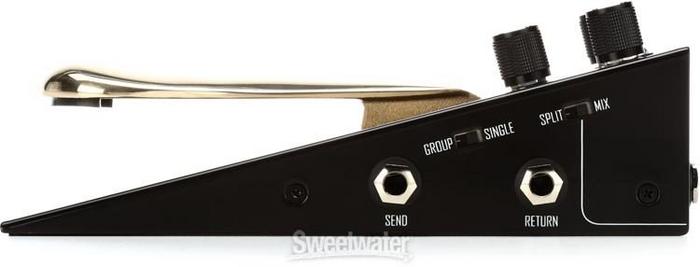
Exploring the inner workings of the sustain pedal deepens our appreciation for its role in shaping a unique guitar sound. These devices essentially add a hold/freeze guitar effect, enabling the guitarist to extend the natural duration of a note. The intricacies of employing such an effect safely and competently underscore the need to fully comprehend your equipment. And, trust me, the payoff merits the effort invested.
The Heart of a Sustain Pedal
Underneath the sturdy enclosure of every sustain pedal lies a circuit designed to increase gain. When you strike a note, the pedal captures and holds the guitar signal, elongating it for as long as you desire. During this period, the strength of the signal is amplified, allowing the note to ring out for longer. But here, it’s crucial to understand that the pedal’s role is not to add new signals, but to manipulate the existing ones from your guitar. This is precisely what contributes to the creative control these devices offer to us, musicians.
Enter The Sostenuto Guitar Pedal
The sostenuto pedal, a type of sustain pedal, shines in replicating piano-style sustain where only certain notes are held while others aren’t. I refer to this as selective sustain. Reflecting upon my personal experience, the sostenuto pedal neatly bridges the gap between the piano’s expressiveness and the guitar’s versatility, providing greater breadth to the narratives we can craft through our music.
By now, you may be marvelling at the power housed within such a compact unit. And indeed, understanding the mechanisms within a sustain pedal – how it digitally freezes the sound without corrupting the original signal – is both fascinating and empowering. It’s an exciting testament to how far guitar sound technology has come, and the new realms it allows us to explore in our musical journeys.
So, with these insights about the workings of sustain pedals, including the unique twist introduced by the sostenuto guitar pedal, we are further equipped to make informed decisions about the gear we choose and how we use it. Consider these elements as you continue to find your unique sound. We’ll move on next to discussing the different models of sustain pedals available – they indeed are as varied as the musicians who use them!
Different Models of Sustain Pedals
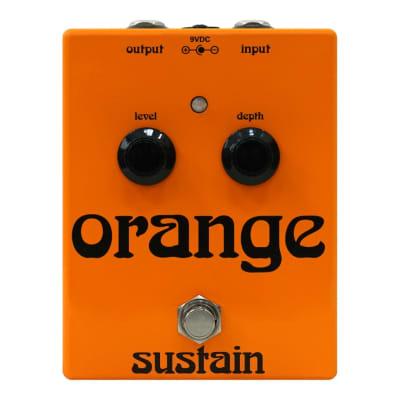
As I delve further into our exploration of guitar sustain pedals, I am reminded of the sheer diversity of models available on the market. Each distinct model comes with its own rare blend of features and functionalities, transforming the tones produced by your guitar into unique musical expressions. So permit me to share with you a few personal favourites that I believe contribute significantly to our understanding of sustain pedals.
Behringer CS400: This model is a personal companion for many of my performances. The Behringer CS400 gives me the ability to control my sustain with supreme precision, providing a long, dreamy sustain or a short, tight control depending on what my performance demands. Its compact design ensures it effortlessly fits into my pedal setup and the affordable price tag is a bonus, proving that you don’t need to break the bank for quality.
Boss CS-3: I must admit, this model is akin to an old friend. The Boss CS-3 is named aptly as the boss of compression and sustain. It offers incredible control that allows me to sculpt the perfect sustain effortlessly. The affordability and rugged build of this pedal mean it adds consistent value to my performances, wherever I go.
The Gamechanger Audio Plus certainly lives up to its name. This sustain pedal offers an entirely different playing experience with an unprecedented level of control over my sound. Additionally, the multitude of in-built effects means I can play around with the tone and length of my sustain, making it a versatile addition to my guitar tool kit.
Understanding the distinct qualities and strengths of different pedal models empowers us to maximize the potential of our guitar performances. Remember, choosing your pedal’s model should be a reflection of your style, preference, and creativity. There are countless models out there, each unique and each contributing to the grand symphony that is guitar music. These three are just the tip of the iceberg, but they’ve certainly enriched my musical journey.
As we move forward in our guide, let’s examine closely the distinctive features that make these sustain pedals so outstanding. We’ll consider the ways in which these factors can influence our music, creating more room to experiment and find our unique sound.
Features of Sustain Pedals
Effects and Controls
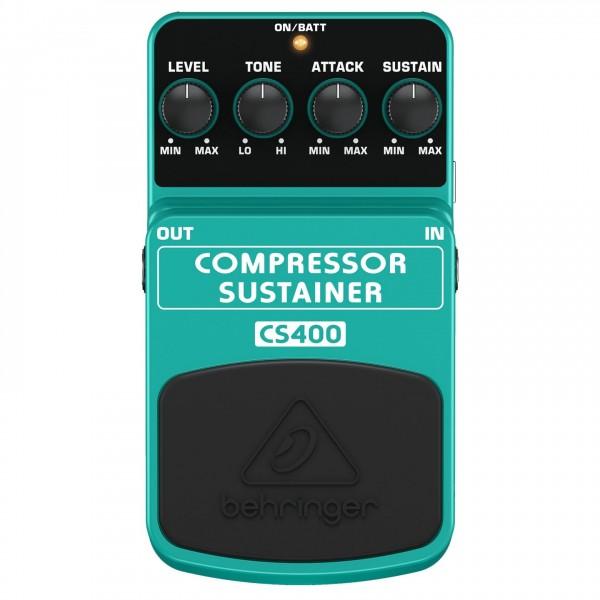
Continuing our exploration of the world of sustain pedals, let us delve deeper into the intricate realms of their effects and controls. This is where the magic truly happens, as you can shape and mould your sound in ways that are entirely unique to your personal style and preference. After all, the ability to manage and manipulate tonal sustains contributes greatly to the richness and depth of musical expression that ensures we can truly make the guitar sing.
Without a doubt, the heart of every effects pedal beats with the rhythm of control, and guitar sustain pedals are no exceptions. With the turn of a knob or the click of a switch, you can command the degree of sustain from a subtle echo to a soaring, cathedral-like resonance. The range of controls often includes ‘attack’, ‘release’, ‘sustain’, and ‘level’, each carrying significant implications on the way your string vibrations resonate and decay.
The enchantment lies in the transformative capacities of these controls. Suppose you’ve played a cordial chord on your guitar. Suppose further, through the marvel of a sustain pedal, you’ve let that chord persist, transmuting it into a long, resounding echo that’s filled the room like incense in a sanctuary. Suppose yet further that you’ve manipulated that echo via the controls we’ve talked about, transforming it into a continuous river of sound. This, my friends, would essentially be an illustration of a long sustain guitar effect.
Moreover, the effects of sustain pedals extend beyond the aural aesthetics of sustain itself. They are equally potent at shaping the tonal characteristics of your guitar’s signal. Such nuanced control is a testament to the technological sophistication and musical capabilities of modern sustain pedals. They can grant your guitar a rumbling warmth when dialed to a low sustain or a squealing feedback at high sustains—your axe’s voice is indeed under your thumb.
In the upcoming sections, we’ll explore other important features such as versatility and compatibility, which contribute immensely to why sustain pedals find a home on almost every guitarist’s pedal board. However, let us not forget how profound and impactful the effects and controls aspect of the sustain pedal is. After all, this is where the soft whisper of a plucked string transforms into a roaring battle cry, truly exemplifying the powerful interplay of electronics and acoustics in a sustain pedal.
Versatility and Compatibility
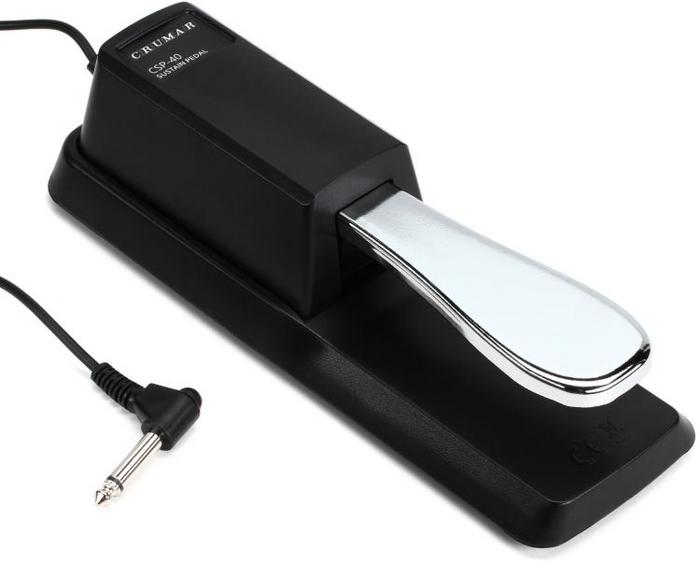
As we delve deeper into the world of sustain pedals, the real stand-out feature that underscores their value is their versatility and compatibility. Whether you are using a piano-style guitar pedal, seeking a clean tone, or utilizing an acoustic sustain pedal, the versatility of these versatile devices ensures their compatibility for a wide range of musical applications.
Remember the time when you imagined weaving ambient textures or extending the ring time of your notes beyond conventional limits? These pedals make all that possible. In my journey with guitars, pedals have come across as powerful tools, helping me to precisely achieve the desired tone. At the same time, their compatibility with a variety of guitar types ensures that my creative explorations remain unhindered.
From subtle note holds adding a delicate touch to your blues, to creating an ethereal soundscape on a rock ballad with a piano-style guitar pedal, the sonic possibilities are indeed endless. I’ve often used sustain pedals as vital elements in my rig setup, for they are these reliable partners offering vital support to the guitar. And the beauty is, they blend in perfectly with other gear.
The importance of getting a clean tone can’t be overstated. With these guitar pedals for clean tone, the signal integrity is maintained, ensuring a crisp and clear output. Real compatibility is when you can use your sustain pedal across different genres, songs, and guitars with comfort. A well-engineered guitar pedal ensures this compatibility without compromising the audio fidelity, allowing you to experiment freely and exhibit versatility.
Acoustic sustain pedals prove to be a game-changer too, endowing acoustic guitars with new dimensions of sound. What you’ll appreciate, as I have, is the ability to draw out rich, resonant tones, ensuring the subtleties of an acoustic sound aren’t overshadowed. Such versatility and compatibility make sustain pedals an indispensable part of my guitar gear.
Thus, versatility and compatibility certainly furnish sustain pedals with an edge, expanding your expressiveness and enabling you to music that’s authentically yours. Up next, let’s explore how to leverage these effects and controls to your advantage, further enhancing the tone and music creation process.
Using and Buying Guide
How to Use a Sustain Pedal
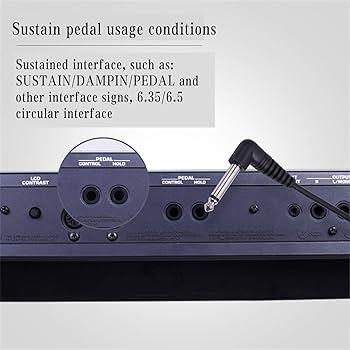
Understanding how to use a sustain pedal can significantly enhance your guitar sound. Let me draw from my years of experience to guide you through this process. First, it’s crucial to plug your sustain pedal into your amplifier, and then, you connect your guitar to the pedal. Next is the exploration of guitar pedal settings — a fundamental part of manipulating the sustain effect. Be patient and take your time learning how your pedal’s settings sway the sustain effect. Do not fear trial and error; it’s the heart of learning.
You’ll notice distinct variations in your guitar’s voice once you properly utilize the sustain pedal. You’ll be able to extend a note’s duration for longer, creating ‘sustain’, adding more depth to your guitar’s voice, and making it sound fuller. Your style and type of music will dictate how much you use the sustain. It’s important to remember that your guitar’s voice should still feel authentic to your musical context and soundscapes, even with the added effect.
In essence, using a sustain pedal can help carry your musical narrative by creating more resonated and elongated sound effects. Furthermore, it’s pivotal to select a pedal that serves your individual needs. If you’re following our ‘Using and Buying Guide’, you’re certainly on the right path towards enhancing your guitar sound with powerful sustain effects. Next on our guide is buying your first sustain pedal, a significant step in integrating this amazing piece of equipment into your guitar playing repertoire.
Buying your First Sustain Pedal
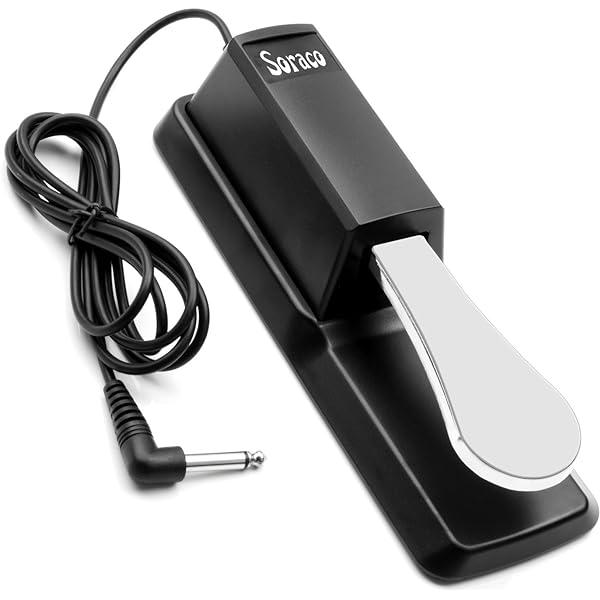
Moving towards the ‘Using and Buying Guide’ section of our detailed journey, let’s delve into the crucial action of buying your first sustain pedal. This is where the theory translates into practical application.
Understanding the importance and relevance of a sustain pedal seriously accelerates your progress in improving guitar sustain. Simply put, starting your hands-on experience with a sustain pedal is like discovering an open road, where endless exploration and innovation are only steps away.
Owning a sustain pedal plays a pivotal role in shaping your skills and advancing your understanding of how its functions supplement your instrument. You start to gauge the significant impact it bears on your sound output and how radically different your guitar can perform with this invaluable companion.
Gradually tapping into its potential, you learn to add nuance to your music with subtlety, harnessing the downright power a sustain pedal puts at your disposal. With practical experience, your comprehension deepens of how individually or in harmony, your guitar and pedal can completely alter the dynamics of your art.
Before committing to a purchase, consider the essential factors detailed in the above sections, such as the features, versatility, compatibility, and, most importantly, how well it aligns with your personal needs and expectations. Acquiring a pedal is more than a simple buy, it’s a personal choice that redefines your journey with the guitar.
In the following sections, I’ll guide you on how to effectively use a sustain pedal and answer potential questions you might encounter in your journey. Remember, mastering the pedal takes practice, but once you embark, there’s no turning back.
FAQs
What is a Guitar Sustain Pedal?
A Guitar Sustain Pedal is a device that allows guitarists to prolong the duration of a note or chord. It does this by compressing the input signal, and releasing it slowly over time.
How does a Sustain Pedal work?
When you press a note on your guitar and engage the sustain pedal, the device maintains the note or chord ringing out after you’ve stopped playing it. It takes the initial input signal, compresses it, and then smoothly releases it over time, so you get a long, smooth sustain effect.
What are the best Sustain Pedals in the market?
Some of the best sustain pedals in the market include the BOSS Audio Systems CS-3, Electro-Harmonix Freeze Sound Retainer, TC Electronic HyperGravity Compressor, and the Xotic SP Compressor.
Can you use a sustain pedal for other effects?
Yes, sustain pedals often double up as tonal shapers, allowing you not only to sustain your notes but also expand your tonal palette. It can provide effects like distortion, chorus, flanger, delay, and more.
Conclusion
As we draw close to the end of this journey, we can’t help but to contemplate: Isn’t it fascinating how a small device can make such a massive difference in your musical journey? A guitar sustain pedal, this seemingly inconsequential accessory, can take your playing to unforeseen heights. It’s amazing how much control and versatility these pedals offer, enhancing your tone and expanding your creative arithmetic.
By understanding the working of sustain pedals, becoming acquainted with different models, and grasping essential features, we can fully appreciate the significance of this device. The way it shapes the effects and controls of your guitar’s output is truly transformative. Whether you’re exploring its compatibility with your current gear or planning to purchase your first pedal, having this understanding is central to your decision process.
There is magic where technique meets passion. Donning my experience hat, I have found that the right sustain pedal feels like an extension of my guitar – a natural conduit that enhances my rendition. I hope that my sharing has cleared your queries and prepared you enough to embark on this exciting chapter of your own musical journey. In the end, it’s all about making extraordinary music. Quite simply, the sustain pedal aids in doing just that.
